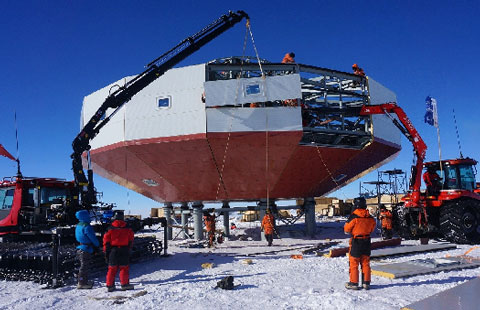Natural gas in China can learn from US
Updated: 2014-02-20 11:20
By China Daily (China Daily USA)
|
||||||||
Beijing's ambitious goals can be met if best practices used: experts
As China is executing its ambitious shale gas development plans to reach 6.5 billion cubic meters (cm) by 2015, the US' experiences in the industry may offer a number of lessons for China, US and Chinese academics concluded in a conference held in Beijing.
Columbia University's Center on Global Energy Policy released a report on Tuesday summarizing the highlights of the day-long conference on China's shale gas development, which took place atPeking University's Law School last month.
The conference featured high-profile participants including David Schizer, Columbia Law School Dean; Jason Bordoff, director of the Center on Global Energy Policy at Columbia School; David Sandalow, former acting undersecretary of energy at the US Department of Energy; as well as industry experts, scholars and Chinese government officials.
"China has tremendous potential for shale gas development.Production to date has been modest, but the government has ambitious goals," Sandalow told China Daily. "In the US, de-regulated prices, a competitive industrial structure, easily transferable mineral rights and a large pipeline network all contributed to the shale gas revolution.
"There are many opportunities for Chinese and US companies to benefit by working together on shale gas," he added.
The conference report points out that China is facing significant challenges in developing its shale resources.
"Chinese shale is deeper and tends to have more clay than shale in the US.Hydraulic fracturing requires large amounts of water, which is in short supply in many parts of China," says the report. "At present there is limited technological expertise in shale gas development in China."
Hydraulic fracturing, or fracking, is a technique that releases the gas and oil trapped underground by pumping liquid at high pressure to crack shale rocks. It is commonly used in shale gas production but comes with risks such as polluting water.
To reduce risks, the conference participants said that the best practices used in the US include well casing and cementing, use of lined pits or steel tanks, and disclosure of chemicals used in fracking.
"Regulatory mechanisms, mainly at the state level, have been an important tool to minimize risks in the US," says the report.
China also has a limited pipeline network and lacks widely accessible detailed geologic data of the reserves, according to conference participants.
"Today the US natural gas pipeline network is almost 10 times as large as China's. Open access to the US pipeline network has played an important role in US shale gas development," says the report. "Expanding the Chinese network will be expensive, but important to successful shale gas development."
Regarding mineral rights, which are government-owned in China and privately owned in the US, scholars suggested that the Ministry of Land Resources may consider more opening-up as they shape future policies.
The report also expresses views calling forfurther price reforms for natural gas in China to promote shale production.
"Natural gas prices in the US have not been subject to price controls since the 1980s," it says.
Despite strict control in energy pricing, Beijing has already set a blue print for reform since the third plenary session of the 18th Communist Party of China Central Committee last November. The reform aims for market mechanisms with less governmental interference. Also, currently there is a 0.4 yuan ($0.07) per cubic meter subsidy to help shale gas build scale.
The conference also touched on how the US oil and gas boom, which is driving the US natural gas price down, may affect China's economic development.
"US natural gas exports will put downward pressure on high Asian LNG (liquid natural gas) prices and help drive world economic growth, both benefiting China," the report says.
Zhang Yang contributed to this story and can be reached at yangzhang@chinadailyusa.com.
(China Daily USA 02/20/2014 page2)

 US warns of airline shoe-bomb threat
US warns of airline shoe-bomb threat
 Beijing issues 1st yellow alert for smog
Beijing issues 1st yellow alert for smog
 Beauty queen the latest victim in Venezuela unrest
Beauty queen the latest victim in Venezuela unrest
 Italy court finalizes Berlusconi divorce
Italy court finalizes Berlusconi divorce
 Neighbors keen to open trade corridor
Neighbors keen to open trade corridor
 Beijing wants more cross-Straits contact
Beijing wants more cross-Straits contact
 Spirit of adventure lives on in Antarctic
Spirit of adventure lives on in Antarctic
 Prince Charles dances in traditional Saudi dress
Prince Charles dances in traditional Saudi dress
Most Viewed
Editor's Picks

|

|

|

|

|

|
Today's Top News
China firmly opposes Obama-Dalai meeting
Americans view China 'mostly unfavorably'
US VP calls Ukrainian leader, warns of sanctions
Can Tencent crack US market?
Chinese can now cherry pick in US
Growth in emerging economies to decline: IMF
NYC Mayor caught breaking laws
IPhone makes gains in China
US Weekly

|

|






